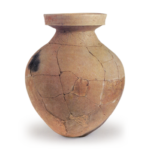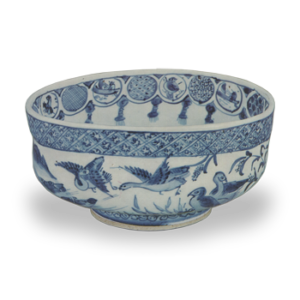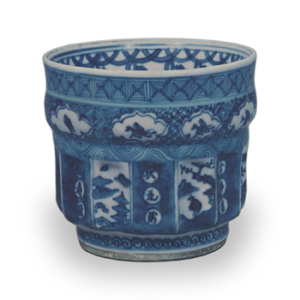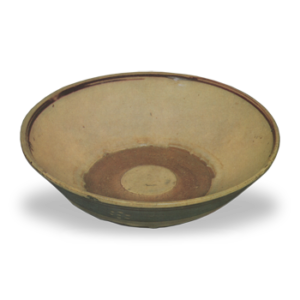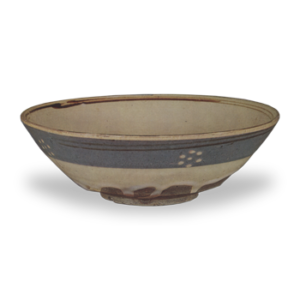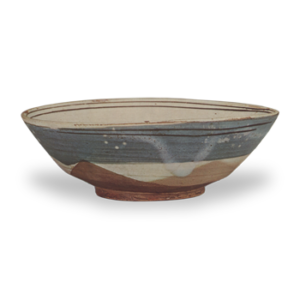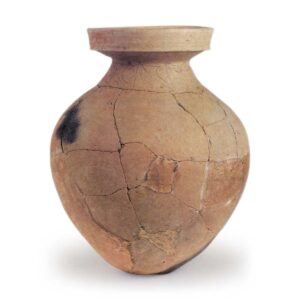
Excavated from the Sakatsu Site, Takahashi River bed, Sakatsu, Kurashiki City, Okayama Prefecture
3rd century
Height 39.0cm, mouth diameter 20.0cm, body diameter 31.8cm, bottom diameter 7.5cm
Kurashiki Archaeological Museum
The Sakatsu Ruins are the remains of a village formed on the first alluvial delta created by the Takahashi River in the Kurashiki Plain in the mid-Yayoi period and later. In particular, a batch of earthenware called “Sakatsu-shiki” is the oldest earthenware in the Kibi region, and is notable as the oldest form before the Nunome-shiki, an archaic type of earthenware in western Japan.
The double-rimmed jar with an inward-tilted neck that bends outward and then rises vertically is directly descended from the late Yayoi period jars of this region. The sandy clay with pebbles has been polished and adjusted on the surface. The base is small and unstable. This jar is famous for the presence of a special engraved design on the neck of the mouth. The engraved design begins at one point on the rim band and extends down the neck of the mouth in a straight line to the neck of the mouth in a pattern similar to a straight arc with a combination of curved and straight lines, with 8.5 units of the same pattern repeated. The presence of such a special pattern and the Tan-nuri technique on the mouth rim band suggest that this is a ritual vessel.

